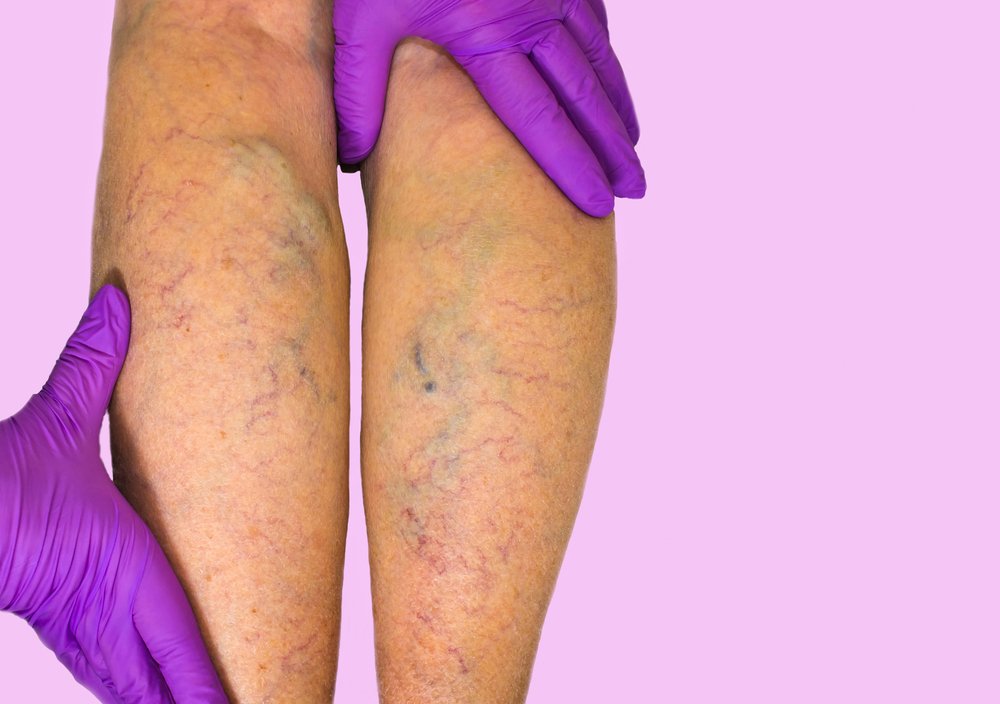 For many women, the concept of 'feeling weighted down' often extends well beyond the metaphorical. In the literal sense, it can manifest as a heaviness in the legs that often goes overlooked or unaddressed. While occasionally dismissed as a result of a long day or overexertion, persistent heaviness in the legs can be a sign of a deeper physiological issue: venous insufficiency.
For many women, the concept of 'feeling weighted down' often extends well beyond the metaphorical. In the literal sense, it can manifest as a heaviness in the legs that often goes overlooked or unaddressed. While occasionally dismissed as a result of a long day or overexertion, persistent heaviness in the legs can be a sign of a deeper physiological issue: venous insufficiency.
What is Venous Insufficiency?
Venous insufficiency is a condition where the veins in the legs are unable to adequately transport blood back to the heart. Ordinarily, the veins contain one-way valves that facilitate the upward flow of blood. When these valves become damaged or weakened, blood can pool in the legs, leading to a range of symptoms including leg heaviness, swelling, varicose veins, and in more severe cases, venous ulcers.
Venous insufficiency can be caused by a variety of factors, such as genetics, prolonged periods of standing or sitting, obesity, and pregnancy. It most commonly affects women, and while not a life-threatening condition, it can significantly impact quality of life if left untreated.
Recognizing the Signs
How can you distinguish between normal fatigue and the beginning signs of venous insufficiency? Here are a few key indicators to look out for:
- Persistent Heaviness: A constant feeling of weight or bulk in the legs that isn't relieved with rest.
- Swelling (Edema): Particularly in the ankles and calves, often worsening throughout the day.
- Aching or Cramping: Discomfort that may intensify following prolonged periods of standing or sitting.
- Restlessness: A restless or agitated feeling in the legs, often disrupting sleep.
- Skin Changes: Including discoloration, dryness, or the development of varicose veins.
Not everyone will experience all of these symptoms, and they can vary in severity, so listening to your body and being mindful of any changes is crucial.
Lifestyle Changes to Alleviate Symptoms
If you suspect venous insufficiency might be the culprit, some changes to your routine can help alleviate the discomfort. These include:
- Regular Exercise: Engaging in activities that promote circulation, such as walking or swimming, can be beneficial.
- Elevate Your Legs: Whenever possible, elevate your legs above your heart to reduce pooling of blood.
- Avoid Prolonged Sitting or Standing: Take regular breaks, and shift positions to encourage proper blood flow.
- Watch Your Weight: Maintaining a healthy weight reduces the strain on your veins.
- Compression Stockings: These can help support your veins and keep blood from pooling.
It's important to keep in mind that these lifestyle changes can help manage symptoms but might not reverse the underlying venous insufficiency. If symptoms persist or worsen, it's essential to consult a healthcare professional for a proper diagnosis and treatment plan.
Treatment Options for Venous Insufficiency
The treatment for venous insufficiency will largely depend on the severity of the condition. For mild cases, conservative measures such as those mentioned above may be sufficient. However, for more advanced cases or if conservative methods are ineffective, there are several medical interventions available:
Sclerotherapy: A minimally invasive procedure where a solution is injected into the veins, causing them to close and reroute blood to healthier veins.
Endovenous Laser Ablation: A newer technique that uses laser energy to seal off faulty veins.
Vein Stripping or Ligation: Surgical procedures that remove or tie off damaged veins.
Venous Stenting: In cases of severe blockages, a stent may be placed in the vein to improve blood flow.
Treatment plans are highly personalized, and your healthcare provider will work with you to determine the best course of action.
Preventive Measures and Long-Term Management
Taking care of your vein health doesn't end with treatment. There are steps you can take to reduce your risk of developing or exacerbating venous insufficiency:
- Nutrition: A diet high in fiber and low in salt can help maintain a healthy weight and manage edema.
- Hydration: Staying well-hydrated ensures that blood remains at a fluid consistency, reducing the risk of clotting and aiding circulation.
- Skin Care: Proper hydration and moisturizing the skin can help reduce the risk of developing venous ulcers.
- Regular Check-ups: Even after treatment, regular monitoring by a healthcare professional is important to catch and address any new developments early.
By being proactive and attuned to the signals your body is sending, you can maintain healthy, functional legs for years to come.
Final Thoughts
Venous insufficiency is a common, yet often undertreated condition that significantly affects the quality of life for many women. The key takeaways are to recognize the signs, make necessary lifestyle adjustments, seek timely medical care when needed, and follow through with preventive measures. With the right knowledge and action, you can alleviate the weight on your legs and walk through life with ease.
